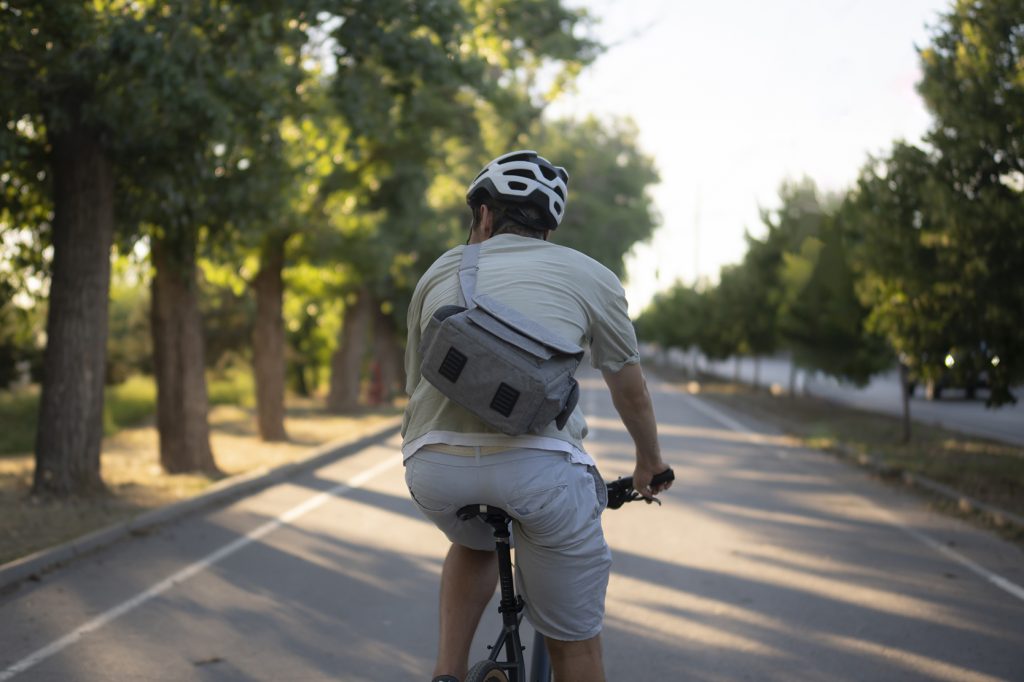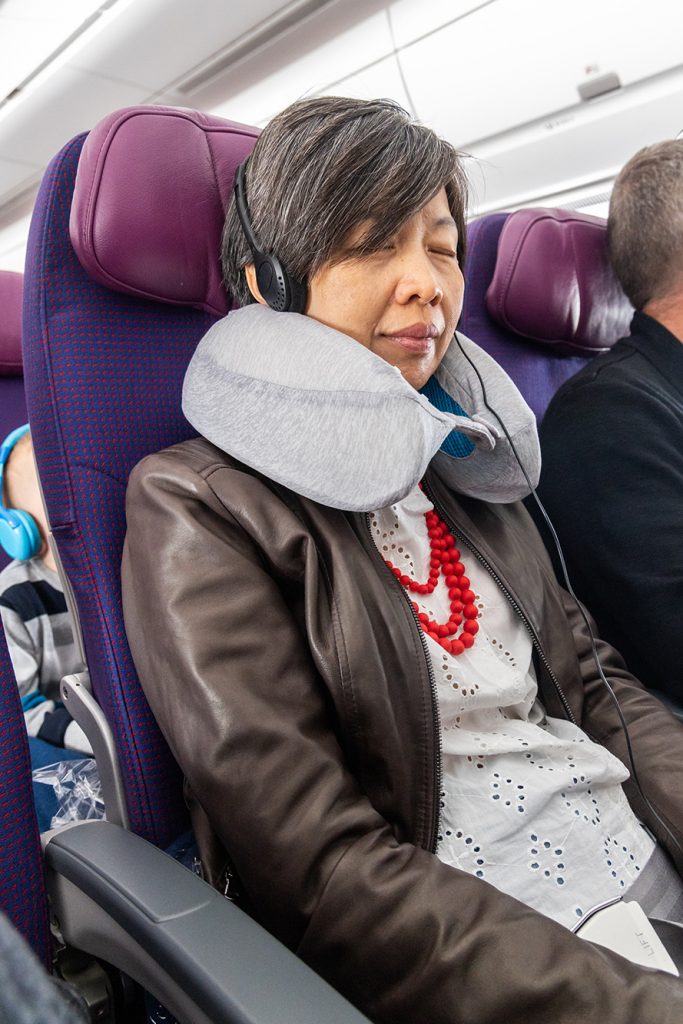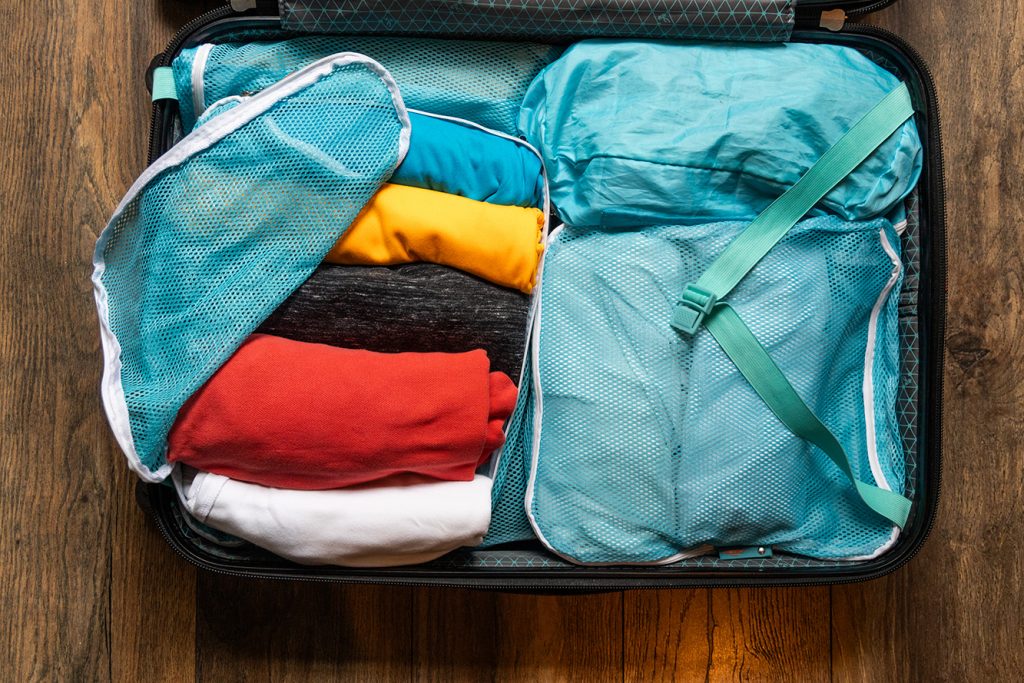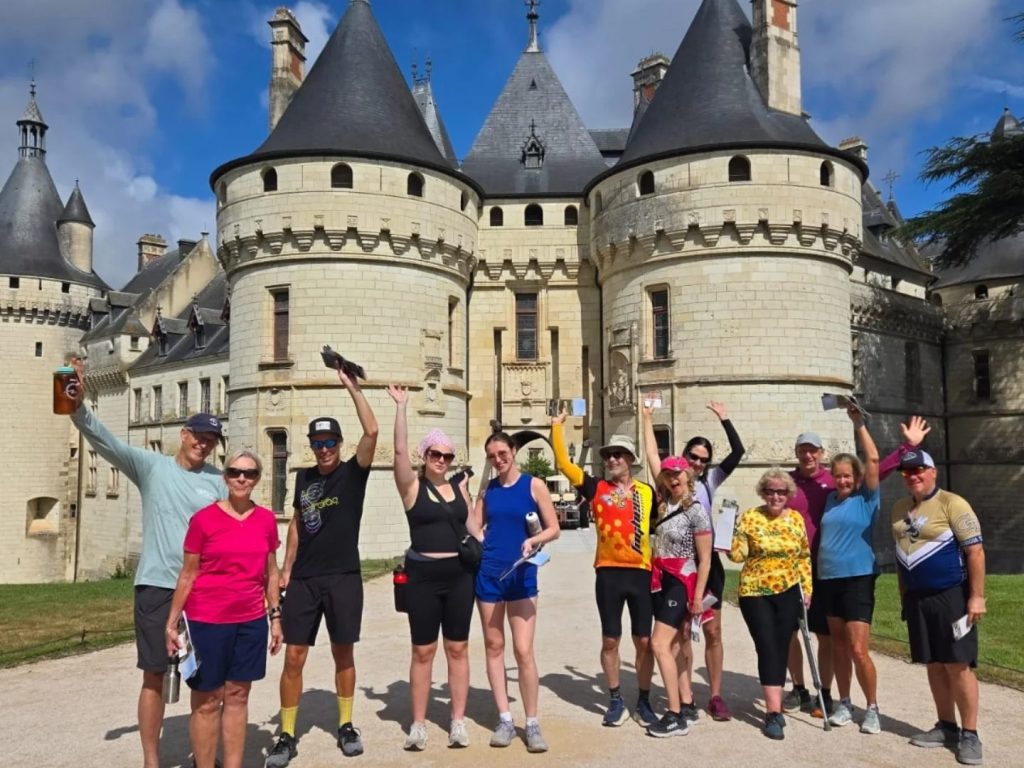Pack Smart for Your European Bike Adventure
The anticipation of cycling through Europe’s most stunning landscapes—pedaling past a Loire Valley châteaux, cruising along Amsterdam‘s picturesque canals, or island-hopping through Croatia’s crystal-clear Adriatic waters—is exhilarating. But first, there’s that long transatlantic flight to conquer!
Whether you’re heading to BRAG International’s Loire Valley tour through France’s château country, the Bruges to Amsterdam bike and boat adventure, or the spectacular South Dalmatian Islands yacht and bike tour in Croatia, your journey begins thousands of feet in the air. The difference between arriving refreshed and ready to ride versus exhausted and disheveled often comes down to smart packing and preparation.
After years of leading cyclists across Europe, we’ve learned that the right travel hacks for long flights that can transform a grueling journey into a manageable—even comfortable—experience. Here are five essential strategies and products that will help you maximize luggage space, stay organized, and arrive at your European cycling adventure ready to clip in and go.
1. Vacuum Bags: Your Secret Weapon Against Baggage Fees
The Challenge: You may want to bring along some specialized gear for your European bike tour—cycling jerseys, padded shorts, a jacket, shoes, helmets—plus regular clothing for evenings exploring medieval towns or dining aboard your boat. Before you know it, you’re facing overweight baggage fees or making tough decisions about what to leave behind.
Travel Hack: Vacuum compression bags are game-changers for long-haul travel. These ingenious bags allow you to compress bulky items like fleece jackets, extra layers, and non-cycling clothing to a fraction of their original size. For a Loire Valley tour where weather can vary, or a Croatia trip where you’ll need both cycling gear and swimwear, vacuum bags let you bring everything without exceeding weight limits.
How to Use Them Effectively: Start by rolling your clothes tightly before placing them in the bags—this maximizes compression and minimizes wrinkles. Group similar items together: one bag for cycling clothing, another for casual wear, a third for layers and jackets. Once filled, seal the bag and roll from the bottom up, forcing air out through the one-way valve. No pump needed for most modern vacuum bags—just your hands and a little pressure.
Pro Tips for Bike Tours:
- Pack your padded cycling shorts flat in vacuum bags to prevent the chamois from getting crushed
- Keep one outfit and essential toiletries in your carry-on in case checked bags are delayed
- Label your vacuum bags clearly so you can find items quickly when living out of a suitcase
You’ll be grateful for compact luggage that fits easily in your luggage while still containing everything you need for a week of cycling and cruising.
2. Portable Camera: Capture Memories Without the Bulk
The Challenge: Smartphone cameras are impressive, but when you’re cycling past Chambord Castle in the Loire Valley, cruising through Belgian canals at golden hour, or watching the sunset from a Croatian island yacht, you want image quality that matches the moment’s magnificence. But professional DSLR systems are heavy, bulky, and impractical for bike touring.
Travel Hack: Modern portable cameras offer the perfect compromise. Compact cameras like the Sony RX100 series, Canon G7X, or Fujifilm X100 series deliver exceptional image quality in pocket-sized bodies. Action cameras like GoPros are ideal for mounting on your bike to capture riding footage, while compact mirrorless cameras with one versatile lens provide professional-grade results without the weight penalty.
Why This Matters for Bike Tours: When you’re cycling 25-40 miles per day, every ounce in your panniers or daypack matters. A portable camera lets you document your adventure without the burden of heavy equipment. During BRAG’s Loire Valley tour, you’ll encounter countless photo opportunities—Renaissance châteaux reflected in the Loire River, vineyards stretching to the horizon, charming villages frozen in time. On the Bruges to Amsterdam route, windmills, tulip fields, and medieval architecture demand to be photographed. And Croatia’s Dalmatian Islands offer some of Europe’s most photogenic coastlines, with ancient walled cities rising from turquoise waters.
Essential Features to Look For:
- Image stabilization for sharp photos while tired from cycling
- Good low-light performance for evening shots in historic towns
- Fast autofocus to catch spontaneous moments
- Weather sealing if you’ll be cycling in variable conditions
- Long battery life or the ability to charge via USB
Packing and Protection: Invest in a small, padded camera case that can clip to your belt or fit in a jersey pocket. For longer cycling days, secure your camera in a handlebar bag or small frame bag where it’s accessible but protected from vibration. Always carry a microfiber cleaning cloth—dust and fingerprints are inevitable on bike tours.
Consider bringing a small, lightweight tripod or gorilla pod for group photos and sunset shots. The connections you’ll make with fellow BRAG riders are as important as the destinations, and having proper group photos creates lasting memories of the friendships formed on these tours.

3. Crossbody Bag: Your On-Flight and Off-Bike Essential
The Challenge: Long flights require easy access to essentials—passport, boarding passes, headphones, snacks, water bottle, medications, electronics. Meanwhile, during your bike tour, you need a secure way to carry valuables when exploring towns on foot after cycling days.
Travel Hack: A well-designed crossbody bag serves double duty as both your in-flight personal item and your off-bike daily carry. Choose one with multiple compartments, RFID protection for passport and credit cards, and comfortable adjustable straps that work for various body types and clothing layers.
For the Flight: Your crossbody bag should fit comfortably under the seat in front of you while containing everything needed for a comfortable transatlantic journey. Pack noise-canceling headphones or quality earbuds, a portable battery pack for your devices, a good book or e-reader, essential medications, hand sanitizer, face wipes, lip balm, and a refillable water bottle (empty through security, then fill before boarding).
Also include a change of underwear, essential toiletries, and perhaps a clean shirt in your crossbody bag. If your checked luggage is delayed—a not-uncommon occurrence these days—you’ll have basics to get through the first day while the airline locates your bags.
For the Bike Tour: Once you arrive and start cycling, your crossbody bag becomes your daily carry for town explorations. After finishing a morning ride through the Loire Valley, you’ll want to explore Amboise or Tours on foot. Your crossbody bag securely holds your phone, wallet, camera, sunscreen, and perhaps a guidebook while leaving your hands free to enjoy a café au lait or browse local markets.
For the Bruges to Amsterdam tour, you’ll be hopping on and off the boat to explore Dutch and Belgian cities. A crossbody bag means you can easily carry essentials without returning to your cabin between cycling and sightseeing. In Croatia, island towns are made for wandering, and a lightweight crossbody bag is perfect for exploring Korčula’s medieval streets or shopping in Hvar’s boutiques.
Nice-to-Have Features:
- Water-resistant or waterproof material (European weather is unpredictable)
- Multiple zippered compartments for organization
- RFID-blocking pockets for passport and cards
- Adjustable strap that can be worn across the chest or over one shoulder
- Lightweight construction that doesn’t add bulk
Pro Tips:
- Choose a bag that can compress flat when not in use, taking minimal space in your luggage
- Look for bags with both inner and outer pockets—keep valuables in interior compartments
- A bag with a water bottle pocket is ideal for staying hydrated during town explorations
- Consider bags with hidden pockets on the back panel for extra security
4. Neck Pillows: Transform Long-Haul Flight Comfort
The Challenge: Transatlantic flights to Europe typically range from 6-8 hours depending on your departure city and destination. Economy seats offer minimal neck support, and attempting to sleep without proper support often results in arriving with a stiff neck and headache—not ideal when you’re supposed to start cycling the next day.
Travel Hack: The right neck pillow can mean the difference between arriving exhausted or arriving refreshed. However, not all neck pillows are created equal. Traditional U-shaped pillows often fail to provide adequate support, causing your head to fall forward during sleep.
Modern Neck Pillow Options:
Memory Foam U-Pillows with Adjustable Support: Look for pillows that allow you to adjust firmness and position. Some include adjustable toggles that let you tighten the pillow to prevent head bobbing, while others feature raised sides that cradle your head more effectively.
Wrap-Around Designs: These innovative pillows wrap completely around your neck, providing 360-degree support. They’re particularly effective for side sleepers and prevent your head from tilting forward or to the side uncomfortably.
Inflatable Options: Modern inflatable neck pillows are far superior to the cheap versions from years past. High-quality inflatable pillows offer adjustable firmness, pack incredibly small, and some include soft fabric covers for comfort. They’re ideal if luggage space is at a premium.
Trtl Pillows and Scarf-Style Support: These unique designs use internal ribs wrapped in soft fleece to support your head in a more natural position. They look unusual but have devoted fans among frequent travelers.

Why This Matters for Bike Tours: Your European cycling adventure begins the moment you board the plane, not when you first push your pedals. Arriving sleep-deprived affects your first day’s experience, your ability to safely navigate new roads, and your overall enjoyment of the tour. Whether you’re starting in France’s Loire Valley, meeting your boat in Bruges, or flying into Split, Croatia, quality sleep on the plane sets the foundation for a great trip.
BRAG’s International tours typically begin the day after arrival, giving you some adjustment time. However, the better you sleep on the flight, the more you’ll enjoy that first day of exploring your starting city. Well-rested travelers adjust to time zones faster, engage more enthusiastically with fellow riders, and start the tour with energy rather than jet lag.
Maximizing Your Neck Pillow: Combine your neck pillow with other comfort strategies for optimal rest. Wear comfortable, loose-fitting clothing in layers you can adjust as cabin temperature fluctuates. Bring an eye mask to block light—even if you don’t typically use one, long flights often have passengers opening window shades at inconvenient times. Compression socks help prevent leg swelling and deep vein thrombosis on long flights, ensuring you’re ready to cycle when you land.
Consider the pillow’s packability when choosing. Some neck pillows include clips to attach to the outside of your carry-on. This keeps them accessible without taking precious space inside your bag. Others compress into small stuff sacks, making them easy to tuck into luggage corners.
Additional Flight Comfort Tips:
- Board with your neck pillow already in place—don’t wait until you’re settled
- Request an aisle seat if you’re tall or prefer stretching your legs
- Set multiple alarms for meal service so you don’t miss eating
- Walk the aisle every few hours to prevent stiffness before cycling days
- Stay hydrated but not overly so—balance hydration with bathroom convenience
5. Compression Packing Cubes: These Will Change Your Life!
The Challenge: Living out of a suitcase for a week or more on a bike tour creates organizational chaos. You’re constantly accessing cycling gear for daily rides, casual clothes for evenings, toiletries for freshening up, and layers for changing weather. Without a system, you end up digging through your entire bag multiple times daily. This creates disorder that only worsens as the week progresses.

Travel Hack: This may be our best travel hack for a long flight! Compression packing cubes revolutionize luggage organization while simultaneously saving space. Unlike vacuum bags that require removing all air, compression cubes use zippers to compress contents moderately while maintaining easy access. They create a modular system within your suitcase, essentially turning your luggage into a mobile dresser with drawers.
How They Work: Standard packing cubes feature a main zipper that closes the cube, plus a secondary compression zipper. This reduces the cube’s volume by 30-50%. Pack items into the cube, close the main zipper, then close the compression zipper to squeeze out excess air and flatten the cube. The result is organized, compressed, easily accessible compartments.
Strategic Organization for Bike Tours: The key to maximizing packing cubes is thoughtful categorization. Here’s a system that works brilliantly for BRAG’s international tours:
Cycling Clothing: Cube 1:
- Padded cycling shorts (3-4 pairs)
- Cycling jerseys (3-4)
- Arm and leg warmers
- Cycling socks
- Base layers for cooler mornings
Casual Evening Wear: Cube 2
- Pants or shorts for dinners
- Casual shirts or blouses
- One nicer outfit for special dinners (many BRAG tours include farewell dinners)
- Non-cycling socks and underwear
Layers and Outerwear: Cube 3
- Light rain jacket
- Fleece or warm layer
- Cycling wind vest
- Extra thermal layer
Accessories and Small Items: Cube 4
- Cycling cap or hat
- Gloves
- Buff or neck gaiter
- Sunglasses (in hard case)
- Small electronics and cables
Tour-Specific Considerations:
Loire Valley, France: Pack for variable spring weather with layers that work for cool mornings and warm afternoons. Include a light sweater or jacket for evening château visits, and one slightly dressier outfit for wine tastings and French restaurants.
Bruges to Amsterdam: This August tour enjoys warm summer weather, but northern Europe can surprise you with rain or wind. Pack lightweight, quick-dry cycling gear that can handle occasional showers, plus casual clothes suitable for exploring sophisticated cities like Amsterdam and Antwerp and medieval towns like Bruges and Ghent. A light jacket or cardigan works for evening boat deck relaxation.
South Dalmatian Islands, Croatia: Summer in Croatia means warm, sunny weather, but you’re island hopping on a yacht, so pack accordingly. Include a swimsuit (you’ll want to jump off the boat into the Adriatic!), sun protection, and lightweight layers for breezy evening sailing. Pack reef-safe sunscreen—the Mediterranean ecosystem is sensitive, and Croatia takes environmental protection seriously.
Benefits of Compression Cubes:
Easy Packing and Unpacking: Instead of emptying your entire suitcase to find one item, simply remove the relevant cube. Looking for cycling shorts? Grab the cycling cube. Need evening clothes? Pull out the casual cube.
Wrinkle Reduction: Compression keeps clothes tightly packed, actually reducing wrinkles compared to loose packing. This matters when you want to look presentable during town explorations or group dinners.
Simplified Repacking: As you move between hotels (Loire Valley tour) or live out of a boat cabin (Bruges to Amsterdam and Croatia tours), packing cubes make relocating your belongings simple. Just grab your cubes and go.
Space Savings: The compression feature is genuinely effective. You’ll fit 20-30% more into your suitcase, which matters when you’re bringing both cycling gear and regular clothes, plus perhaps picking up souvenirs along the way.
Cleanliness Management: Designate one cube for dirty clothes. As cycling clothes get worn and washed, keep clean and dirty items separated effortlessly. This prevents sweaty cycling gear from contaminating fresh clothes.
Choosing Quality Cubes: Invest in durable compression cubes with strong zippers—cheap versions fail quickly. Look for cubes with mesh panels that allow you to see contents without opening them, making item location even faster. Water-resistant material protects contents if your luggage gets wet, and reinforced stitching ensures they’ll last through multiple trips.
Consider buying a set with various sizes rather than all identical cubes. Small cubes work perfectly for accessories and electronics, medium cubes handle clothing, and large cubes can accommodate bulkier items like jackets or shoes.
Color Coding: Many compression cube sets come in multiple colors. Use this to your advantage: blue for cycling gear, gray for casual clothes, green for layers, red for accessories. This creates instant visual organization, especially helpful when multiple people are sharing luggage space or boat cabins.
Bonus Travel Hacks for European Bike Tours
While the five essentials above form your foundation, a few additional travel hacks enhance your experience:
Portable Luggage Scale: European airlines strictly enforce weight limits, and bike gear is heavy. A small digital luggage scale lets you avoid surprise overweight fees at the airport. Weigh your bag before leaving home and again before returning with souvenirs.
Quick-Dry Towel: Hotels provide towels, but boats may have limited supplies. A compact, quick-dry travel towel is invaluable for Croatia’s yacht tour, where you’ll want to rinse off after swimming in the Adriatic. It also works perfectly for drying bikes after rain.
Universal Power Adapter with USB Ports: European outlets vary by country. A quality adapter with multiple USB ports lets you charge your phone, camera, bike computer, and other devices from one adapter—crucial when outlet access is limited on boats.
Dry Bags: Small waterproof bags protect electronics, cameras, and important documents from rain during cycling days. They’re essential for Croatia’s island hopping, where sea spray is part of the experience.
Preparing for Your BRAG International Adventure
Smart packing transforms long flight travel from stressful to seamless, but don’t forget the bigger picture: you’re embarking on an incredible cycling adventure through some of Europe’s most beautiful regions.
Loire Valley, France offers fairytale châteaux, world-class wines, and cycling along the peaceful Loire River. You’ll pedal through countryside that has inspired artists and royalty for centuries, staying in charming towns where French culture comes alive.
Bruges to Amsterdam combines the best of Belgium and the Netherlands—medieval architecture, innovative cuisine, vibrant tulip fields, and canal-lined cities that seem designed for cycling. The bike and boat format means comfortable floating accommodations while you explore by day.
South Dalmatian Islands, Croatia delivers Mediterranean magic: crystal-clear Adriatic waters, ancient walled cities, lavender-scented islands, and spectacular coastal cycling. The yacht-based tour adds luxury to adventure, with swimming breaks between cycling segments and sunset views from the deck.
All three tours share BRAG’s commitment to affordability, quality, and community. You’ll cycle with like-minded adventurers, supported by experienced guides who handle logistics so you can focus on enjoying the experience.

Ready to Pack and Ride
With these travel hacks in your arsenal—vacuum bags for space savings, a portable camera for capturing memories, a versatile crossbody bag for organization, a quality neck pillow for flight comfort, and compression packing cubes for effortless packing—you’re prepared for long-haul travel that sets you up for cycling success.
The transatlantic flight becomes less of an ordeal and more of an exciting prelude to adventure. You’ll arrive organized, rested, and ready to clip in for your first ride through European countryside or coastline. Your luggage will be compact and well-organized, your valuables secure, and your comfort optimized.
Most importantly, these long flight travel hacks eliminate stress and uncertainty, allowing you to focus on what matters: the experience ahead. Whether you’re cycling through Loire Valley vineyards, cruising Amsterdam’s canals, or island-hopping through Croatia’s Adriatic paradise, your journey begins the moment you start packing.
Learn more about BRAG International’s European bike tours at international.brag.org. Your perfectly packed bags—and the adventure of a lifetime—await.
Pro Tip: Don’t wait until the last minute to test your packing system. Do a trial run two weeks before departure, using your compression cubes and vacuum bags to pack everything you plan to bring. This reveals what works, what doesn’t, and gives you time to adjust your strategy or purchase any missing items. By departure day, packing will be second nature, and you’ll leave with confidence that everything you need is organized and ready.
